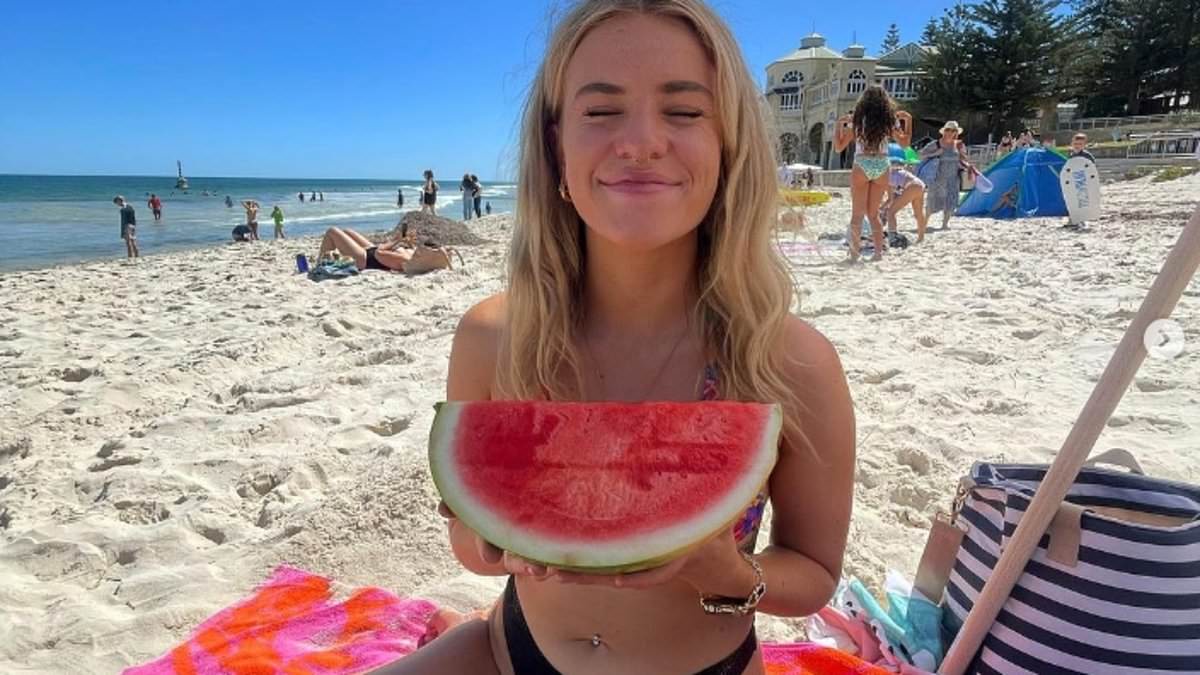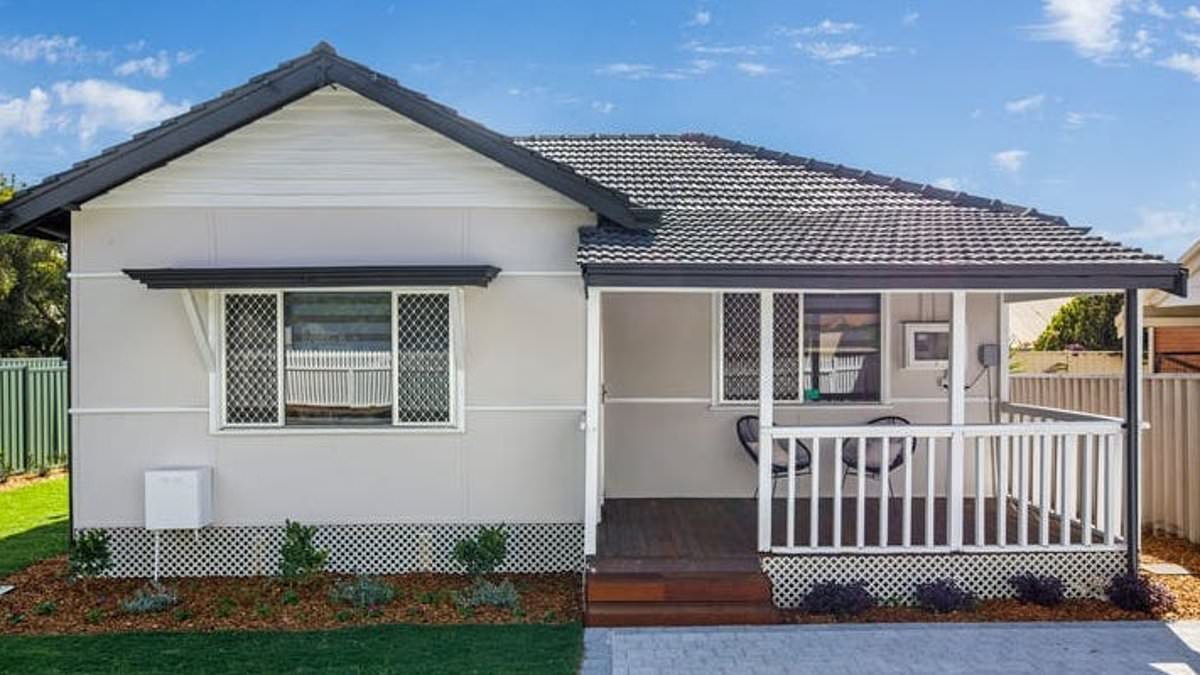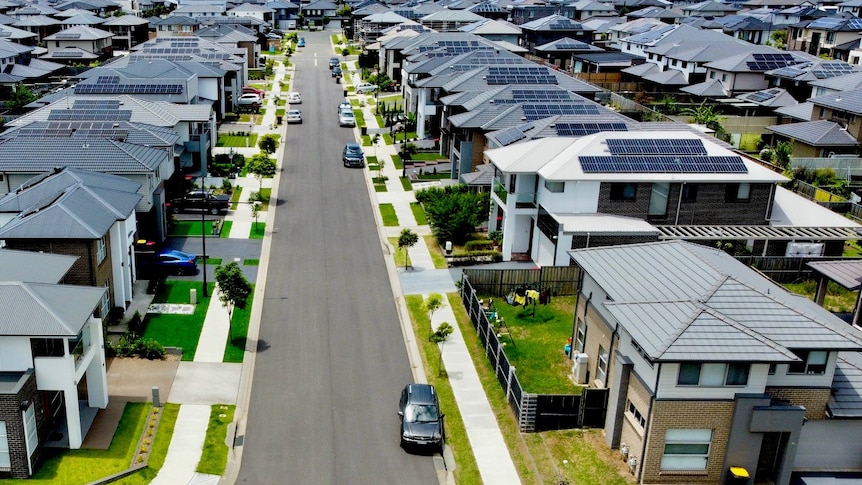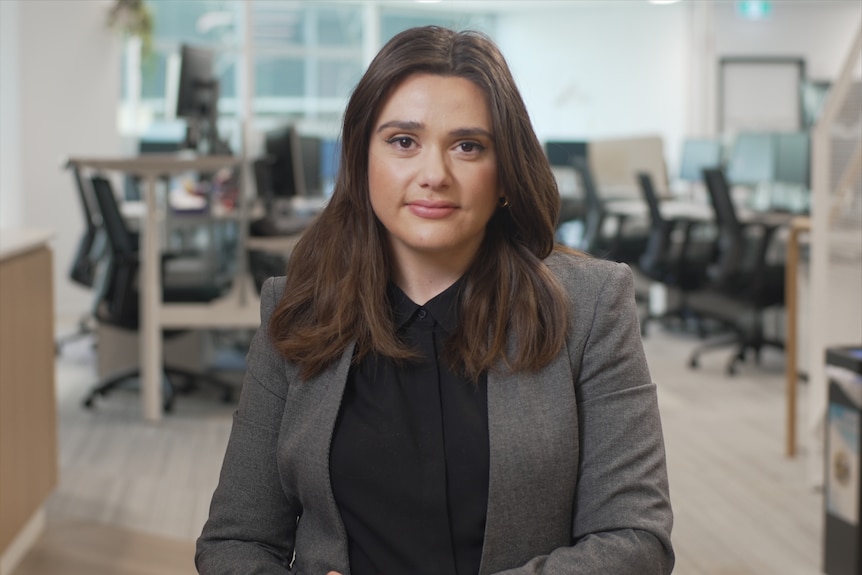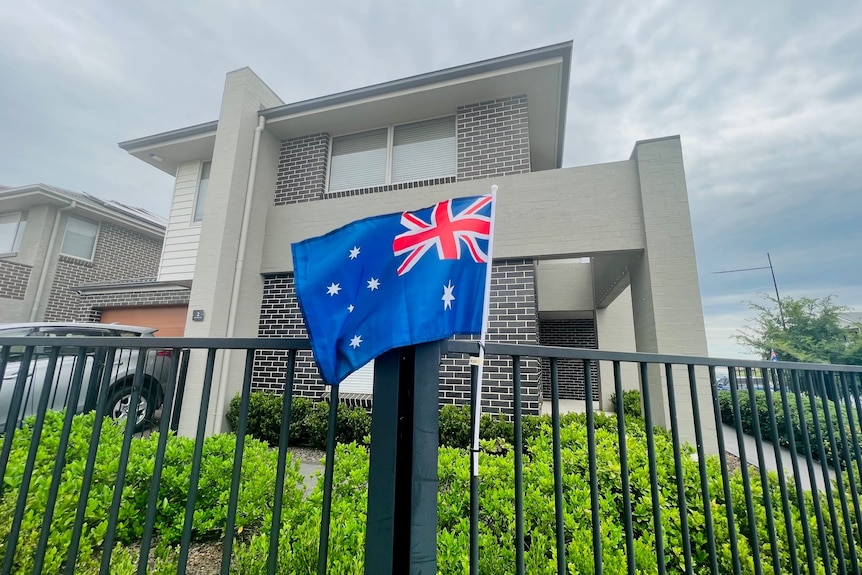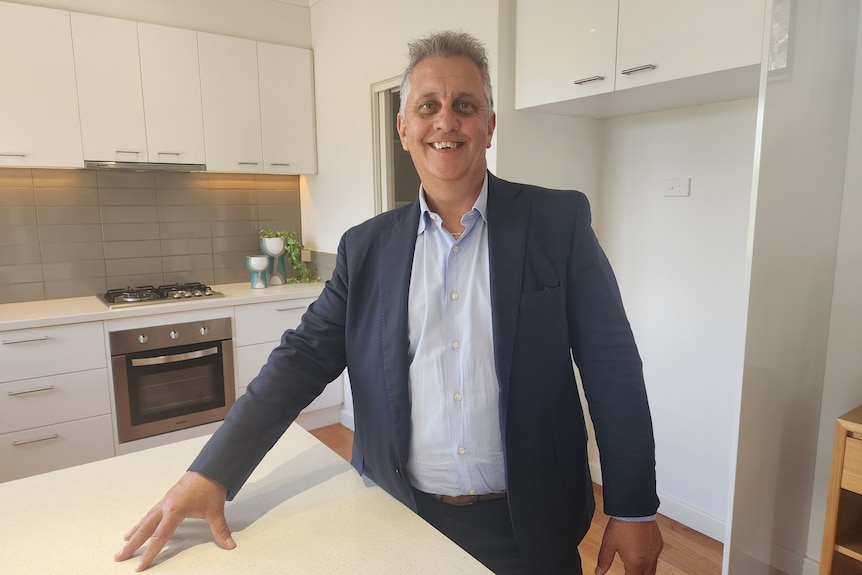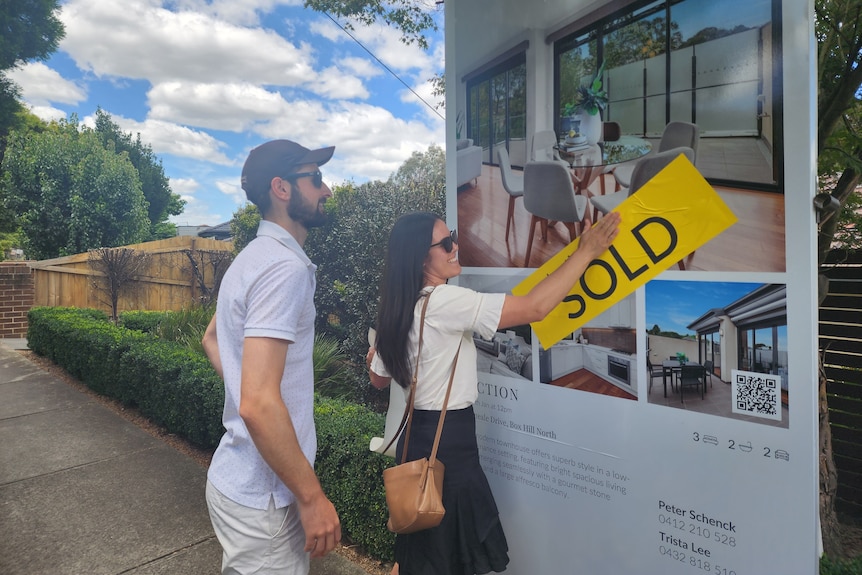Melbourne is still a surprisingly affordable city for average-income borrowers looking to buy a house near the water and be a reasonable commute from the city, new figures show.
Unlike Sydney, Brisbane, Perth and Adelaide, the median house price hasn’t been soaring by double-digit figures at some point during the past year.
Intriguingly, Melbourne’s median house price has also been growing at a slower pace than wages, despite receiving a large intake of overseas migrants, with Brisbane now on track to overtake it.
In the year to April, its mid-point house price grew by 3 per cent, which was well below the wage price index of 4.2 per cent, new CoreLogic data released on Wednesday showed.
While the median house price of $941,698 is still dear, there are suburbs near Port Phillip Bay where the mid-point price is still under $600,000.
This is despite Melbourne’s population growing at a faster pace than Sydney’s, as fewer people left the Victorian capital following an influx of new overseas migrants.
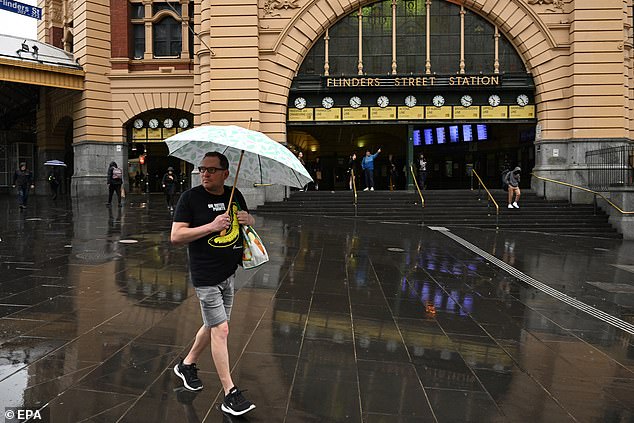
Melbourne is still a surprisingly affordable city for average-income borrowers looking to buy a house near the water and be a reasonable commute from the city (pictured is a man outside Flinders Street Station)
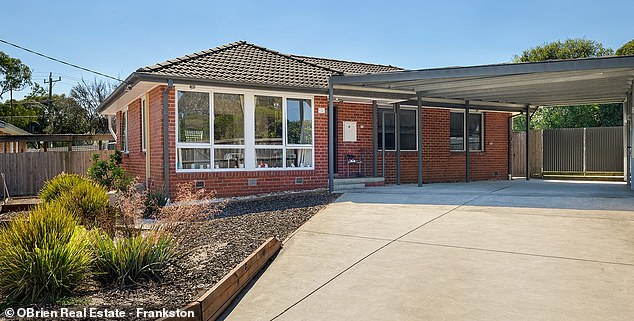
Frankston North, a one-hour train ride located 53km south-east of the city, has a median house price of $597,429, making it affordable for an average, full-time worker on $98,218
Frankston North, a one-hour train ride 53km south-east of the city, has a median house price of $597,429, making it affordable for an average, full-time worker on $98,218 as values rose by just 3.3 per cent over the year.
Living near the water is now cheaper than doing the same thing 50km north of Brisbane, where Caboolture’s median house price is $660,993 – following a 13.7 per cent annual increase.
Brisbane’s median house price during the past year has soared by 15.9 per cent to $920,046, putting it within striking distance of overtaking Melbourne.
But it was far from the only state capital city where prices soared with Perth’s median house value soaring by 21.3 per cent to $753,947, as Adelaide’s mid-point climbed by 13.9 per cent to $800,648.
Sydney is still Australia’s most expensive capital city with a median house price of $1.421million but its annual growth pace of 9.6 per cent is a moderation from the double-digit figures of 2023 and early 2024.
Living by the water is also a lot dearer, even for those on the Central Coast an hour’s drive north, with Woy Woy having a mid-point house price of $948,550, following a 9 per cent increase during the past year.
Canberra is Australia’s second dearest city with a median house price of $972,699 but the 2.8 per cent annual growth pace was also weaker than the wage price index.
Hobart was the only state capital city where prices went backwards, with house values falling by 0.2 per cent to $692,004.
Darwin’s median house price grew by just 1.4 per cent to $579,229.
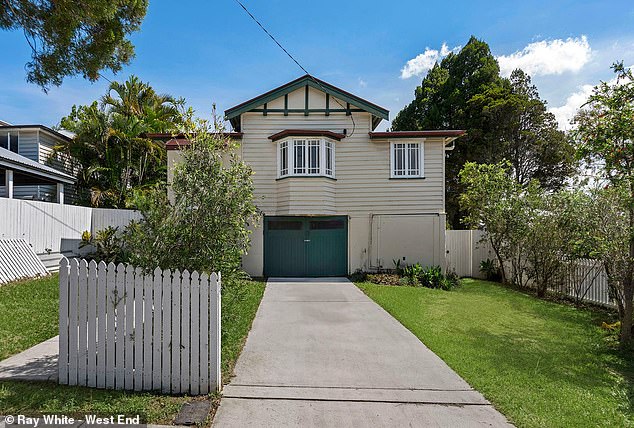
Brisbane’s median house price during the past year has soared by 15.9 per cent to $920,046, putting it within striking distance of overtaking Melbourne (pictured is a house in Moorooka)
Australian property prices grew for the 15th straight month in April, with values up 11.1 per cent or $78,000 since the trough in January last year, reaching $779,817.
CoreLogic research director Tim Lawless said an undersupply of housing was driving demand, especially in Perth where houses are typically selling in just 10 days.
‘Such a mismatch between available supply and demonstrated demand is keeping markets skewed in favour of sellers in most cities,’ he said.
This is occurring despite the Reserve Bank in November raising interest rates for the 13th time in 18 months to a 12-year high of 4.35 per cent.
Melbourne’s slower house price increase is surprising, given that it has a low rental vacancy rate and had a 3.3 per cent population growth pace in 2022-23, compared with Sydney’s 2.8 per cent, Brisbane’s 3.1 per cent and Perth’s 3.6 per cent.
By Stephen Johnson, Economics Reporter For Daily Mail Australia
08:55 08 Apr 2024, updated 09:02 08 Apr 2024
Australian big city house prices are tipped to surge by more than a third during the next three years with Sydney‘s median price set to hit the $2million mark.
The increases forecast between now and June 2027 would be even more significant than the price rises since the onset of Covid four years ago, which covered interest rates aggressively rising from record-low levels as immigration surged.
Oxford Economics Australia is forecasting Sydney’s median house price hitting $1.934million by June 2027 and Perth $1million.
Melbourne and Brisbane were also all expected to have mid-point houses costing seven figures by then as prices surge between a third and 43 per cent.
Even before the rate cuts, Australian investor lending has already surged by 13.3 per cent during the past year in a sign buyers fear missing out on more price rises, new official lending figures released on Monday revealed.
This means average-income earners on a $98,218 salary, and plenty of savings for a 20 per cent mortgage deposit, are being urged to shop around now for a suburban house or inner-city unit, under $640,000, to avoid missing out on the boom.
Until the Reserve Bank cuts interest rates, possibly from late 2024, banks are only able to lend someone 5.2 times their pay before tax.
But once the rate cuts start, banks will be able to lend more, leading to even higher prices, with values tipped to particularly soar at the more affordable end of the market.
‘The November 2023 cash rate hike to 4.35 per cent is expected to be the last this cycle, with the next movement downward,’ Oxford Economics Australia said.
‘Anticipated interest rate cuts from late 2024, overlaid by a sustained housing shortage are set to accelerate price growth in 2025.’
Australia’s net overseas migration level hit a record high of 548,800 in the year to September but Oxford Economics Australia is expecting that to slow to 410,000 in 2023-24 and 250,000 by the 2026-27 financial year.
‘Net overseas migration is driving the current surge in Australia’s population growth,’ Oxford Economics Australia said.
‘While three-quarters of new overseas arrivals enter the rental market, which relies on investor supply, there remains a channel that is adding to the competition for established properties.’
The more affordable end of the property market is tipped to soar as baby boomers downsize and those aged 30 to 45 look to escape rising rents.
‘Strong growth in rents is likely having a spillover effect, encouraging some households to enter owner-occupation,’ the report said.
Price rises are tipped to grow by at weaker pace in cities like Adelaide and Hobart, that boomed during the pandemic but no longer receive a huge influx of interstate migration.
Canberra, now Australia’s second most expensive capital city market after Sydney, was tipped to slip into fourth place behind Melbourne and Brisbane by mid-2027 – even with a typical house price in the seven figures.
Sydney
Sydney’s median house price was tipped to hit a new record-high of $1.934million in just three years – up 36.7 per cent or $519,271 from last month’s $1.414million level, based on CoreLogic data.
This would be an even steeper increase than the 25.4 per cent rise in Sydney property prices since early 2020, including the peak two years ago.
The city is so dear the median apartment price was tipped to be in the seven figures within three years, climbing by 29.2 per cent or $245,656 to $1.085million.
Inner-city unit values in particular were tipped to soar, as rental vacancy rates remained near historically-low levels.
‘Support factors include affordability pressures, migration patterns, and weak apartment completion volumes intensifying competition, especially for available inner-city apartments,’ Oxford Economics Australia said.
Australia’s most expensive city is only affordable for couples buying a home, with a single investor having to travel 115km north to San Remo on the Central Coast where $676,824 is the mid-point house price.
But Auburn, 22km west of the city, has a mid-point apartment price of $535,025.
Sydney receives the biggest influx of overseas migrants but also the biggest exodus to other states because it is too expensive for young people.
Brisbane
Brisbane, one of Australia’s strongest performing capital city markets since the pandemic, would see its mid-point house price climb by another $297,712, translating into a 32.7 per cent increase as the median house price rose to $1.208million, up from an existing record high of $909,988.
Oxford Economics Australia senior economist Maree Kilroy said strong interstate migration into south-east Queensland would boost Brisbane values.
‘Demand fundamentals are expected to remain strong, with Queensland positioned at the front of the pack in terms of population growth,’ she said.
‘The soft near-term supply outlook means pressure on the housing stock is set to endure, creating a strong platform for further growth once the current monetary policy tightening cycle reverses.’
The Queensland capital however still has pockets of value, with flood-prone Rocklea just 12km from the city having a median house price of $639,980, compared with the Logan suburb of Beenleigh’s $609,503 and Caboolture’s $660,993, in the Moreton Bay area.
Melbourne
Melbourne, a slower-growing market since the pandemic, would see its median house price rise by 36.7 per cent or $343,451 to $1.278million, up from $935,049.
Investors hoping to buy on their own still have choices at Frankston North, 54km from the city, where the median house price is still $597,429 and Jacana, 25km north of the city where the mid-point is $550,716.
Perth
Perth, Australia’s best performer during the past year, was expected to be Australia’s best performing market during the next three years, with the median house price tipped to climb by 42.7 per cent or $314,124 to $1.049million, up from an existing record high of $735,276.
‘The Perth boom looks firmly entrenched,’ Ms Kilroy said.
‘Risk is firmly to the upside with it noted that the Perth property market has shown a propensity for significant upswings in price cycles that dwarf other markets.’
Bentley, just 10km south of the city, still has a relatively affordable median price of $656,141.
Adelaide
Adelaide’s median house price was tipped to rise by 21.4 per cent to $954,300, up $168,329 from a record high now of $785,971.
But beachside Taperoo has a more affordable mid-point of $672,901.
South Australia’s interstate migration is a lot weaker than the internal inflow into Queensland and Western Australia.
Hobart
Hobart’s median house price was tipped to grow by 23.4 per cent or $162,749 to $855,700, up from $692,951.
Darwin
Darwin’s equivalent mid-point house price was tipped to rise by 21.2 per cent or $122,102 to $695,600, up from $573,498.
Canberra
Canberra, now Australia’s second most expensive capital city market after Sydney and ahead of Melbourne, was expected to slip into fourth place, behind Brisbane.
Oxford Economics is only expecting 21.2 per cent growth during the next three years as the median house price rose by $206,564 to $1.170million, up from $964,136.
But with public servants having higher pay, Canberra is in fact considered a more affordable property market compared with incomes.
Interest rates
While Reserve Bank interest rates are now at a 12-year high of 4.35 per cent, the futures market and the big banks are expecting a series of rate cuts in 2024 and 2025.
The Commonwealth Bank is expecting six rate cuts by June 2025, which would see the cash rate fall back to 2.85 per cent.
A borrower with an average, $598,624 mortgage would see their monthly repayments fall by $570 from $3,780 now to $3,210 as their variable rate fell to 4.99 per cent, down from 6.49 per cent.
The prospect of rate cuts is buoying lending with the value of owner-occupier loans soaring by 9.1 per cent in the year to February while investor mortgages went up by 21.5 per cent, new Australian Bureau of Statistics lending data released on Monday showed.
CommSec economists Craig James and Ryan Felsman said the 13.3 per cent annual surge in overall home lending showed buyers had a fear of missing out.
‘There is a general perception that interest rates have peaked, and this may be seeing greater urgency by home buyers to secure their purchase, fearful of a more significant influx of buyers when interest rates actually start their descent,’ they said.
Australian big city house prices are tipped to surge by more than a third during the next three years with Sydney‘s median price set to hit the $2million mark.
The increases forecast between now and June 2027 would be even more significant than the price rises since the onset of Covid four years ago, which covered interest rates aggressively rising from record-low levels as immigration soared.
Oxford Economics Australia is forecasting that Sydney’s median house price will hit $1.934million by June 2027, with Perth reaching $1million.
The median price in Melbourne and Brisbane was also expected to reach seven figures during the same period as prices rise between a third and 43 per cent.
Even before the rate cuts, Australian investor lending has increased 13.3 per cent during the past year in a sign buyers fear missing out on more price rises, new official lending figures released on Monday revealed.
This means average-income earners on a $98,218 salary, and with plenty of savings for a 20 per cent mortgage deposit, are being urged to shop around now for a suburban house or inner-city unit under $640,000 to avoid missing out on the boom.
Until the Reserve Bank cuts interest rates, possibly from late 2024, banks are only able to lend a borrower 5.2 times their pay before tax.
But once the rate cuts start, banks will be able to lend more, leading to even higher prices, with values tipped to particularly soar at the more affordable end of the market.
‘The November 2023 cash rate hike to 4.35 per cent is expected to be the last this cycle, with the next movement downward,’ Oxford Economics Australia said.
‘Anticipated interest rate cuts from late 2024, overlaid by a sustained housing shortage, are set to accelerate price growth in 2025.’
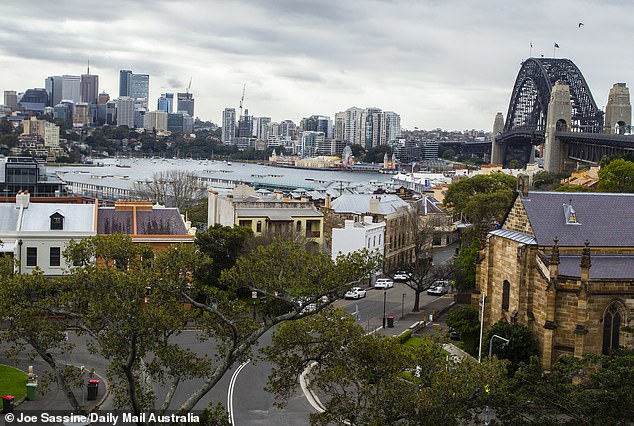
Sydney’s median house price was tipped to hit a new record-high of $1.933million in just three years – up 36.7 per cent or $519,271 from last month’s $1.414million level, based on CoreLogic data (pictured is the Sydney Harbour Bridge as seen from Observatory Hill)
Australia’s net overseas migration level hit a record high of 548,800 in the year to September but Oxford Economics Australia is expecting that to slow to 410,000 in 2023-24 and 250,000 by the 2026-27 financial year.
‘Net overseas migration is driving the current surge in Australia’s population growth,’ Oxford Economics Australia said.
‘While three-quarters of new overseas arrivals enter the rental market, which relies on investor supply, there remains a channel that is adding to the competition for established properties.’
The more affordable end of the property market is tipped to soar as baby boomers downsize and those aged 30 to 45 look to escape rising rents.
‘Strong growth in rents is likely having a spillover effect, encouraging some households to enter owner-occupation,’ the report said.
Price rises are tipped to grow by at weaker pace in cities like Adelaide and Hobart, that boomed during the pandemic but no longer receive a huge influx of interstate migration.
Canberra, now Australia’s second most expensive capital city market after Sydney, was tipped to slip into fourth place behind Melbourne and Brisbane by mid-2027 – even with a typical house price in the seven figures.
Sydney
Sydney’s median house price was tipped to hit a new record-high of $1.934million in just three years – up 36.7 per cent or $519,271 from last month’s $1.414million level, based on CoreLogic data.
This would be an even steeper increase than the 25.4 per cent rise in Sydney property prices since early 2020, including the peak two years ago.
The city is so dear the median apartment price was tipped to be in the seven figures within three years, climbing by 29.2 per cent or $245,656 to $1.085million.
Inner-city unit values in particular were tipped to soar, as rental vacancy rates remained near historically-low levels.
‘Support factors include affordability pressures, migration patterns, and weak apartment completion volumes intensifying competition, especially for available inner-city apartments,’ Oxford Economics Australia said.
Australia’s most expensive city is only affordable for couples buying a home, with a single investor having to travel 115km north to San Remo on the Central Coast where $676,824 is the mid-point house price.
But Auburn, 22km west of the city, has a mid-point apartment price of $535,025.
Sydney receives the biggest influx of overseas migrants but also the biggest exodus to other states because it is too expensive for young people.
Brisbane
Brisbane, one of Australia’s strongest performing capital city markets since the pandemic, would see its mid-point house price climb by another $297,712, translating into a 32.7 per cent increase as the median house price rose to $1.208million, up from an existing record high of $909,988.
Oxford Economics Australia senior economist Maree Kilroy said strong interstate migration into south-east Queensland would boost Brisbane values.
‘Demand fundamentals are expected to remain strong, with Queensland positioned at the front of the pack in terms of population growth,’ she said.
‘The soft near-term supply outlook means pressure on the housing stock is set to endure, creating a strong platform for further growth once the current monetary policy tightening cycle reverses.’
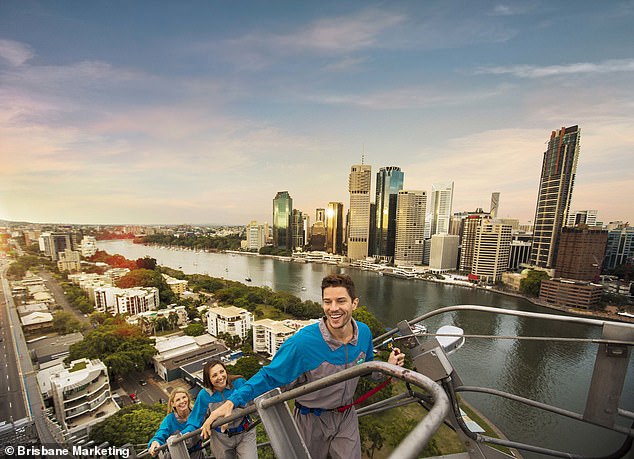
Brisbane, one of Australia’s strongest performing capital city markets since the pandemic, would see its mid-point house price climb by another $297,712, translating into a 32.7 per cent increase as the median house price rose to $1.208million, up from $909,988
The Queensland capital however still has pockets of value, with flood-prone Rocklea just 12km from the city having a median house price of $639,980, compared with the Logan suburb of Beenleigh’s $609,503 and Caboolture’s $660,993, in the Moreton Bay area.
Melbourne
Melbourne, a slower-growing market since the pandemic, would see its median house price rise by 36.7 per cent or $343,451 to $1.278million, up from $935,049.
Investors hoping to buy on their own still have choices at Frankston North, 54km from the city, where the median house price is still $597,429 and Jacana, 25km north of the city where the mid-point is $550,716.
Perth
Perth, Australia’s best performer during the past year, was expected to be Australia’s best performing market during the next three years, with the median house price tipped to climb by 42.7 per cent or $314,124 to $1.049million, up from an existing record high of $735,276.
‘The Perth boom looks firmly entrenched,’ Ms Kilroy said.
‘Risk is firmly to the upside with it noted that the Perth property market has shown a propensity for significant upswings in price cycles that dwarf other markets.’
Bentley, just 10km south of the city, still has a relatively affordable median price of $656,141.
Adelaide
Adelaide’s median house price was tipped to rise by 21.4 per cent to $954,300, up $168,329 from a record high now of $785,971.
But beachside Taperoo has a more affordable mid-point of $672,901.
South Australia’s interstate migration is a lot weaker than the internal inflow into Queensland and Western Australia.

Melbourne, a slower-growing market since the pandemic, would see its median house price rise by 36.7 per cent or $343,451 to $1.278million, up from $935,049
Hobart
Hobart’s median house price was tipped to grow by 23.4 per cent or $162,749 to $855,700, up from $692,951.
Darwin
Darwin’s equivalent mid-point house price was tipped to rise by 21.2 per cent or $122,102 to $695,600, up from $573,498.
Canberra
Canberra, now Australia’s second most expensive capital city market after Sydney and ahead of Melbourne, was expected to slip into fourth place, behind Brisbane.
Oxford Economics is only expecting 21.2 per cent growth during the next three years as the median house price rose by $206,564 to $1.170million, up from $964,136.
But with public servants having higher pay, Canberra is in fact considered a more affordable property market compared with incomes.
Interest rates
While Reserve Bank interest rates are now at a 12-year high of 4.35 per cent, the futures market and the big banks are expecting a series of rate cuts in 2024 and 2025.
The Commonwealth Bank is expecting six rate cuts by June 2025, which would see the cash rate fall back to 2.85 per cent.
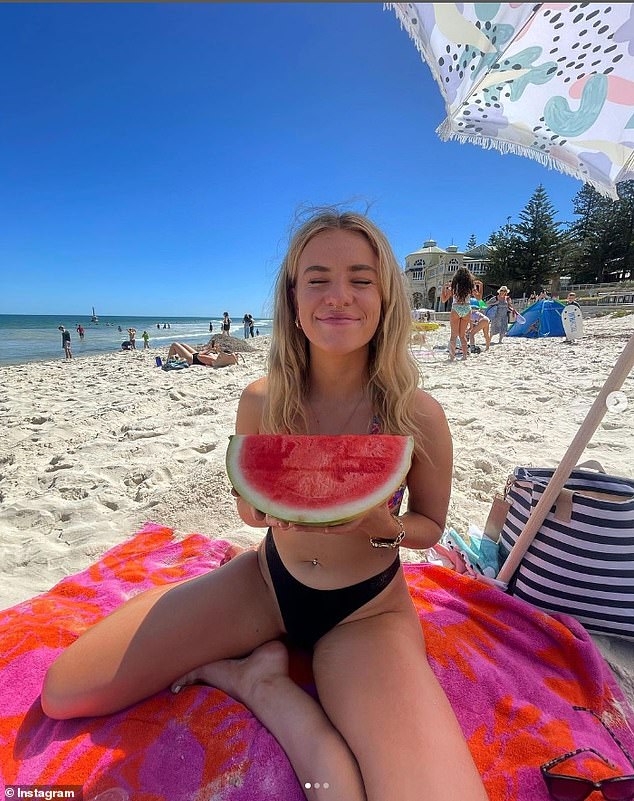
Perth, Australia’s best performer during the past year, was expecting to be Australia’s best performing market during the next three years, with the median house price tipped to climb by 42.7 per cent or $314,124 to $1.049million, up from $735,276
A borrower with an average, $598,624 mortgage would see their monthly repayments fall by $570 from $3,780 now to $3,210 as their variable rate fell to 4.99 per cent, down from 6.49 per cent.
The prospect of rate cuts is buoying lending with the value of owner-occupier loans soaring by 9.1 per cent in the year to February while investor mortgages went up by 21.5 per cent, new Australian Bureau of Statistics lending data released on Monday showed.
CommSec economists Craig James and Ryan Felsman said the 13.3 per cent annual surge in overall home lending showed buyers had a fear of missing out.
‘There is a general perception that interest rates have peaked, and this may be seeing greater urgency by home buyers to secure their purchase, fearful of a more significant influx of buyers when interest rates actually start their descent,’ they said.
Reserve Bank Governor Michele Bullock has admitted she didn’t realise house prices would surge so soon as interest rates kept on rising.
‘We were surprised when they started rising again quite frankly and I think everyone was,’ she told a media conference on Tuesday afternoon.
But Ms Bullock said she preferred not to speculate on property prices.
‘I wouldn’t like to predict housing prices, frankly. Every time we try to do that, we seem to get it wrong,’ she said.
The most aggressive interest rises since 1989 had initially caused property values to fall in 2022 but in 2023, they soared again, last month reaching record highs in Brisbane, Adelaide and Perth.
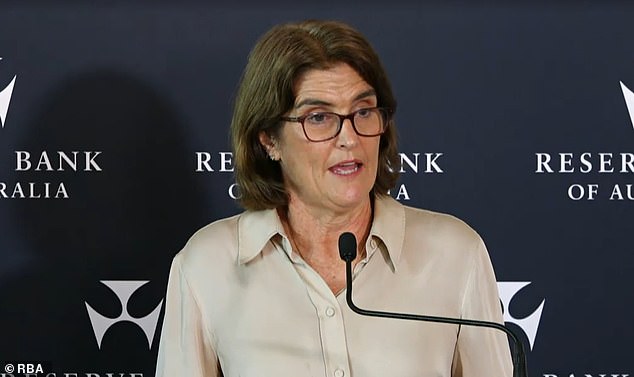
Reserve Bank Governor Michele Bullock has admitted she didn’t realise house prices would surge as interest rates kept on rising
Sydney‘s median house price surged by 11.7 per cent in the year to February to an even more unaffordable $1.396million in a city which gets a larger share of overseas migration, CoreLogic data showed.
This put prices in the city only 1.9 per cent below the January 2022 peak, with Sydney’s high reached four months before the RBA hiked rates for the first time since 2010.
But in Brisbane, mid-point house prices have soared by 15.7 per cent during the past year to $899,474 while in Perth, they climbed by 18.6 per cent to $718,560.
Both cities attract an influx of new residents moving from interstate.
The house price increases have occurred as immigration levels hit a record-high of 518,000 during the last financial year, with the annual level only moderating to 481,620 in January.
Strong population growth meant demand for property climbed, despite high interest rates reducing what banks can lend.
This saw wealthier, skilled migrants buy a house instead of compete with many others for rental accommodation during a housing crisis, which has made long queues common at rental home inspections.
Ms Bullock noted high immigration had boosted demand for goods and services in the Australian economy.
‘Aggregate demand because of population growth has been elevated,’ she said.
‘It’s true that as interest rates rise, borrowing ability of households declines because your repayments go up so you can borrow less.
‘It’s true that that effect is there but ultimately the bigger force in housing, I think, comes down to supply and demand.’
The Reserve Bank on Tuesday left interest rates on hold at a 12-year high of 4.35 per cent but Ms Bullock said it was too early to rule out another rate hike because inflation was still too high.
‘The war isn’t yet won, so we continue to be vigilant and we can’t rule anything in or out,’ she said.
‘We’re not confident enough to say we can rule out further interest rate changes.’
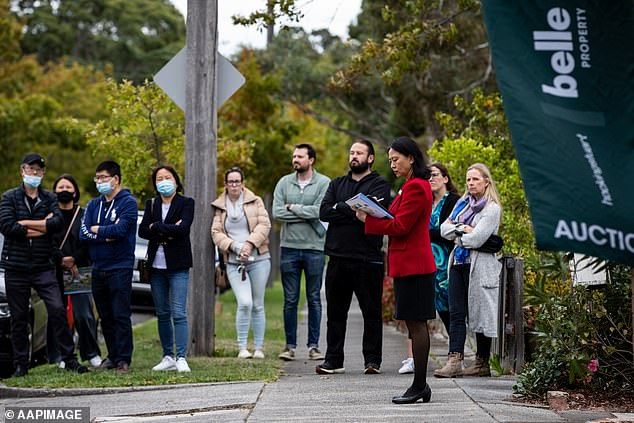
The most aggressive interest rises since 1989 had initially caused property values to fall in 2022 but in 2023, they soared again (pictured is a Melbourne auction)
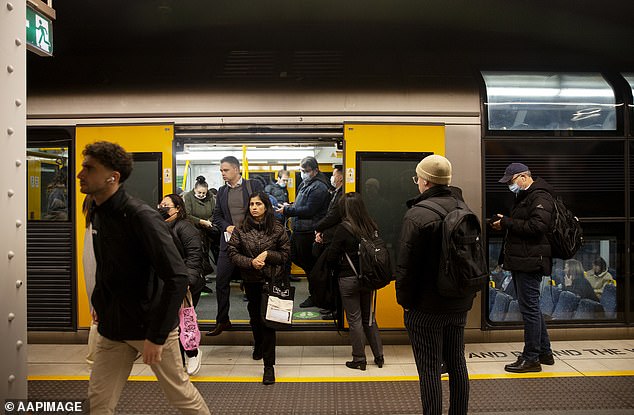
The house price increases have occurred as immigration levels hit a record-high of 518,000 during the last financial year, with the annual level only moderating to 481,620 in January (pictured is Sydney’s Wynyard train station)
Monthly inflation data showed the consumer price index at 3.4 per cent in January.
But the more comprehensive quarterly CPI data had annual headline inflation at 4.1 per cent in December.
The Reserve Bank is not expecting inflation to fall within its 2 to 3 per cent target band until December 2025.
While some capital cities are seeing price growth, Hobart has suffered from the rate rises with its median house price of $696,508 at a level 12.2 per cent below the March 2022 peak.
Melbourne’s mid point house price of $942,779 is 4.1 per cent below the March 2022 peak.
The RBA’s 13 rate rises in 18 months mean banks can now only lend a borrower, with a 20 per cent mortgage deposit, up to 5.2 times their pay before tax.
The banks are required to assess a borrower’s ability to handle a 3 percentage point increase in variable mortgage rates, but rates in 2022 and 2023 soared by 4.25 percentage points.
By Stephen Johnson, Economics Reporter For Daily Mail Australia
05:11 01 Feb 2024, updated 09:59 01 Feb 2024
- Perth house prices up 17 per cent in a year
- No longer the cheapest state capital market
More affordable Australian cities outside of Sydney and Melbourne that attract new residents from interstate instead of overseas have seen the strongest surge in house prices.
Perth is no longer Australia’s most affordable state capital city market with its median house price jumping by 17 per cent in the year to January to $708,335, CoreLogic data released on Thursday showed.
In January alone, house prices rose by 1.6 per cent, with CoreLogic research director Tim Lawless describing Perth as a stand out for its persistently rapid rate of capital gains.
Prices in the West Australian capital are now at a record high, having earlier peaked in 2014 after the last mining boom before stagnating for years.
The middle price in Perth still buys something with a backyard less than 10km from the city centre in an inner-city suburb like East Victoria Park.
‘The western capital continues to see housing demand outweigh supply,’ Mr Lawless said.
In the coastal satellite city of Mandurah, south of Perth, property values have surged by 21.2 per cent to $596,579 during the past year.
This occurred as Brisbane‘s mid-point house price rose by 15 per cent to $888,628.
In the southern suburbs, stretching from inner-city Annerley to Stretton, home prices soared by 20.7 per cent to $1,053,461.
Both Perth and Brisbane are growing because of interstate migration, as new overseas arrivals flock to Sydney and Melbourne.
These provincial capital cities had the biggest house price increases even though the Reserve Bank in November raised interest rates in November for the 13th time in 18 months to a 12-year high of 4.35 per cent.
Real estate values in Australia’s state capital cities are increasing despite the most aggressive interest rates since 1989 because of rapid population growth.
Sydney, Australia’s most expensive capital city market, saw its median house price over the year rise by 12.8 per cent to $1,395,218.
This occurred after a record 518,000 net migrants, on a net basis, moved to Australia during the last financial year.
Sydney has Australia’s biggest influx of new overseas residents but also the biggest exodus to other states.
Cities with a colder climate had weaker property price increases.
Melbourne, another major recipient of new foreign arrivals, saw its mid-point house price rise by a lesser 4.3 per cent over the year to $942,750.
Hobart is now Australia’s most affordable state capital city with its median house price over the year falling by 0.5 per cent to $692,619.
Adelaide, however, had a double-digit increase with its mid-point house price rising by 10.2 per cent to $774,969.
Canberra, Australia’s second most expensive capital city market, saw its median house price rise by a more subdued 1.9 per cent annually to $968,248.
Darwin is still Australia’s cheapest capital city market with the Northern Territory capital’s median house price rising by just 0.3 per cent to $578,342.
AMP senior economist Shane Oliver said a lack of supply would see Australian house prices continue to grow in 2024, but at a slower rate.
‘Our base case remains for softer home prices this year, but the housing shortage and increasing confidence in rate cuts may keep average house price gains modestly positive,’ he said.
But with inflation last year falling to a two-year low of 4.1 per cent, Dr Oliver said Reserve Bank of Australia rate cuts in late 2024 could see prices climb again at a fast pace.
‘Expect a renewed upswing from later this year in response to lower mortgage rates,’ he said.
‘Falling inflation adds to confidence that rates will be falling from mid-year, but bear in mind that RBA communication will likely remain cautious on inflation and rates for a while yet.’
By Zak Wheeler For Daily Mail Australia
02:50 24 Jan 2024, updated 03:02 24 Jan 2024
The dream of owning a home is drifting ever further out of reach for most Aussies as property prices continue to skyrocket.
Sydney‘s median house prices are the highest in the country and have recently hit a new record with the price now at $1.6million.
The figure is only expected to continue going up as interest rates and taxes are looking to receive a cut which will incentivise more buyers.
Median house prices have risen across the country with the figure at $1,047,273 in Melbourne, $888,285 in Brisbane, $875,034 in Adelaide and $742,390 in Perth.
The median – or middle – salary stood at $67,600 in August with this figure covering everyone working full-time or part-time.
Someone on this income with no children buying on their own would only be able to borrow $324,800, a RateCity analysis for Daily Mail Australia showed.
Prices in Sydney have risen by $6,000 since the previous peak in the March quarter of 2022, but this trend is expected to slow in 2024.
Anyone looking to enter the property market is likely to need at least $1,595,310 according to the latest Domain House Price Report which was released on Thursday.
From December 2022 to December 2023 the average price of a house has risen by 10.6 per cent and the price of units by 2 per cent.
The median price of a home in Sydney is now roughly twice that of a unit, with the former benefiting from house scarcity and cashed-up buyers.
‘These are buyers that are active, less sensitive to interest rates, they’re supported by family members, family wealth, or they are owner-occupiers that are well established, and they are less sensitive to the cost of debt,’ Domain chief of research and economics Dr Nicola Powell told the Sydney Morning Herald.
Every region of the city is more expensive to buy in today than they were one year ago, except for units on the Central Coast which are down 7.2 per cent.
The suburbs that received the biggest boosts include the Ryde area, the inner west, northern beaches and the north shore.
Areas to the west of the CBD like Baulkham Hills, Hawkesbury, Blacktown, the outer south-west and Parramatta all experienced a decline in unit prices in the December quarter of 2023.
BresicWhitney chief executive Thomas McGlynn told the publication that this downward trend was likely caused by supply exceeding demand as investors sell and families suffer mortgage pain.
The areas where there were a lack of listings however saw the best growth, according to Westpac senior economist Matthew Hassan, who expects prices to continue going up.
An insurgence of migration and general population growth has also seen rentals become more limited which in turn has boosted the prices tenants are willing to pay.
This, combined with proposed interest rate and tax cuts, could cause another unexpected boost soon, according to Westpac senior economist Matthew Hassan.
‘Tax relief is coming through and there would be some other policies waiting in the wings because state and federal governments are keen for more new houses to be built. We do expect prices to rise, but something has to happen to really kick it along,’ he told the publication.
Dr Powell predicted a 7 or 9 per cent increase in Sydney home prices should stage three tax cuts put more money into buyers’ pockets.
But as prices rise, Mr Hassan said the ‘$1 million question’ would be if people would begin migrating out of Sydney as the city’s affordability worsens.
Diana Batkin, 50, works for a medical company has been trying to buy a unit as an investment property for more than a year but has struggled to enter the market.
Ms Batkin remains hopeful that even though interest rates remain high that she will be able to enter the ‘strong and competitive market’ soon.
Increasing population will drive property price growth in Cairns above the Brisbane average over the next three years, according to a new report.
According to the organisation’s findings from its flagship Residential Property Prospects report “prices in North and Far North Queensland are starting from a more affordable base, while the downward trend in total listings is limiting the pass through of tight credit conditions”. Quarterly growth returned in both markets in the third quarter of 2023, with the median house price hitting $580,000 in Cairns and $410,000 in Townsville.
Oxford Economics Australia forecasts that the median house price will rise by near six per cent per annum in both regions over the three years to 2026.
This will see price growth outpace Brisbane, closing the price gap to the state’s capital.
The report said elevated home insurance costs in North Queensland had dragged on house price growth over the past decade, but the introduction of the $10bn Northern Australia Cyclone Reinsurance Pool in mid-2022 provides a potential upside for house prices via the reduction of insurance premiums.
Savvy buyers on the Northern Beaches of Cairns are now looking at Clifton Beach real estate over the more expensive neighbouring suburb of Palm Cove. RE/MAX sales agent Natasha Whalley-Thompson has just sold Stuart Kyle and Tony Head’s property on Linden Street, Clifton Beach, to an interstate couple before it went to auction. Picture: Brendan Radke
Maree Kilroy, report author and senior economist at Oxford Economics Australia told the Cairns Post: “Recovering tourist flows and a firming investment outlook will sustain a tight labour market, contributing to higher rates of population growth and maintaining pressure on the housing stock, driving upwards pressure on property prices”.
The report noted that risk exists for the Cairns market as the impact of tropical cyclones plays through.
Ex-tropical cyclone Jasper caused a record level of rain resulting in significant flooding.
This will impact the dwelling stock, likely pushing some residents into the rental market in the short-term, the report said.
Ms Kilroy said: “Short term, Cyclone Jasper will add pressure to the rental market with households needing significant repairs to their dwelling seeking temporary rental properties”. “Longer term the cyclone will likely lead to expensive home insurance bills in North Queensland adds downside risk to prices.”
Ms Kilroy said in the last few years affordability had deteriorated more so in Brisbane (and more broadly South East Queensland) than in Cairns.
“Recovering tourist flows and a firming investment outlook will sustain a tight labour market, contributing to higher rates of population growth” said Maree Kilroy.
She said that since bottoming out in the December quarter of 2022, Brisbane became one of the strongest markets through 2023.
Advertised stock levels are running more than 30 per cent below average, while the volume of home sales is trending almost five per cent above average levels.
“The return of interest rate cuts from late-2024 should facilitate even stronger price growth over the two years to FY2026.” the report said.
Loading embed…

